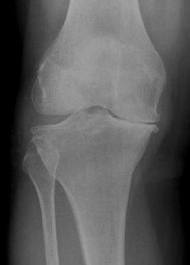Osteoarthritis (OA)
- Home
- Whole Body Conditions
- Common Ailments
- Osteoarthritis (OA)
Osteoarthritis (OA) is the most common joint condition in the UK affecting approximately 8.5 million people. All races are affected, though there are differences between races in how commonly the different joints are affected – for example, hip and hand osteoarthritis are common in Europeans and people of European descent but uncommon in people of Chinese and Afro-Caribbean descent
‘Osteo’ means bone and ‘Arthritis’ means joint damage and swelling (inflammation). The term therefore refers to a progressive condition where the surface(s) of the joint are damaged and the surrounding bone and tissues grow thicker.
Osteoarthritis is also interchangable with the term osteoarthrosis. The latter refers to damage of a joint but does not make reference to the inflammation part of the condition.
OA is sometimes referred to as a ‘wear and tear’ condition. A more accurate term to describe the condition should be as a process of ‘wear and repair’. This is because the slow repair process that the body normally uses to repair damaged joint(s) can become ineffective over time. The repair process normally passes unnoticed, however if the body’s ability to repair itself is weakened then the damage to an affected joint(s) will continue and symptoms of arthritis are experienced.
There are 3 characteristics of OA:
- Damage to the cartilage i.e. the strong, smooth surface that lines the bones and allows the joint(s) to move easily and without friction becomes frayed and torn and it loses its ability to lubricate the joint
- Bone becomes thicker to make up for the ‘thinning’ of the cartilage. Bony growths can also develop around the edge of the joint(s); these spurs are known as osteophytes
- Mild inflammation of the tissues around the joint(s) (synovitis) develops. The capsule around the joint will also become thicker.
The exact reasons why people develop OA aren’t fully understood. However, there are certain factors that may increase your risk. These include:
- Age – people aged over 40 are more likely to develop OA
- Gender – women are more likely to be affected than men
- Weight – being overweight or obese will obviously put extra strain on weight bearing joints and can contribute to the possibility of developing OA
- Hereditary – research shows a link between developing OA when someone else in your family has the condition
- Trauma or overload to a joint – i.e. playing sport or injury to your joint can affect your body’s ability to repair itself, the damage to the affected joint therefore continues and you can experience the symptoms of OA.

There are a number of symptoms associated with OA which vary from person to person:
- Pain – is normally experienced within and around the joint(s) affected. People can describe their pain as a dull throbbing ache within the joint(s) or burning sensation. Sharp pains are normally felt in the associated muscles and tendons. People normally feel pain on initial movement and following activity
- Swelling – is normally experienced in the initial stages of OA around the joint(s) affected. As the condition progresses the swelling can settle but the joint(s) still appear large due to bony changes
- Stiffness – this is a classic symptom of OA. People normally complain of stiffness on waking and following periods of rest
- Crepitus – this refers to the ‘noises’ heard during the movement of a joint i.e. the cracking or grating sound. Crepitus occurs due to the bones rubbing against one another and the thinning process of the cartilage
- Muscle weakness and loss of bulk
- Warm joints – joints affected by OA will feel warm due to the inflammatory process
Diagnosis
Your GP will make the diagnosis dependent on the presentation of your symptoms. An x-ray will also confirm the diagnosis as this will show the integrity and quality of the bones. Osteoarthritis can be classified as primary or secondary depending whether there is or there is not an identifiable cause.

There is no cure for OA, however that are many treatments and self-help management techniques that can ease the symptoms. NICE (National Institute for Clinical Excellence) 2008 recommends a holistic approach when managing the symptoms of OA. This means that all factors (psychological, psychosocial and physical) need to be considered when developing the best package of care for a patient with OA.
- Balance – it is important to find the correct balance between rest and exercise. It is vital that you exercise your joints from becoming stiff and weak and find a balance so as not to overdo things. Swimming is a great way to stay active and does not load the joint(s)
- Physiotherapy can assist in creating a daily rehab program to ensure that you manage your symptoms. Physiotherapy can also offer advice on the correct form of exercise for you
- Medication is extremely useful to help control the pain and inflammation associated with the condition. Your GP or consultant will be able to advise on the most appropriate medication for you and your symptoms. Medications include:
- Pain Killers e.g. paracetaomol/cocodamol
- Non-steroidal anti-inflammatory drugs (NSAIDs) help reduce the symptoms of inflammation relieving pain and swelling
- Injections – corticosteroid injections are sometimes injected into a specific joint to help reduce inflammation
- Acupuncture can be used in additional or as an alternative pain relief.
- Surgery – sometimes surgery is necessary for severely damaged joints, or when conservative treatment is no longer offering relieve of the symptoms
- Joint Replacement is the most common surgery recommended. Surgeons will replace any joint that displays moderate to severe OA symptoms and when the symptoms are having a negative effect on the patients quality of life. Physiotherapy is important following joint replacement surgery to ensure that the best outcome is achieved.

